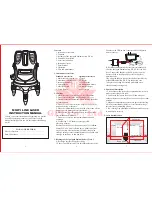
R3267 Series Spectrum Analyzer Operation Manual (Vol.1)
5.2 GPIB Remote Programming
5-7
5.2
GPIB Remote Programming
The analyzer is equipped with a GPIB (General Purpose Interface Bus) that complies with IEEE Standard
488.1-1978. This bus allows you to attach and use an external device to remotely control the analyzer.
5.2.1
GPIB
The GPIB is a high-performance interface bus used to connect measuring instruments to a computer.
IEEE Standard 488.1-1978 defines the operations of the GPIB. Since the GPIB has a bus-configured in-
terface, connected devices are designated by assigning them a specific address. You can connect up to 15
devices in parallel using a single bus. GPIB devices perform one or more of the following functions:
•
Talker
Sends data to the bus. Only one active talker can exist on the GPIB bus.
•
Listener
Receives data from the bus. Multiple active listeners can exist on the GPIB bus.
•
Controller Specifies which devices are designated as “talkers” or “listeners”. Only one active control-
ler can operate on the GPIB bus. Controllers used to control IFC and REN messages are
referred to as system controllers.
When there are multiple controllers attached to the bus, the system controller becomes the active controller
by default. Other devices that can act as controllers operate as addressable devices when the system is ac-
tivated.
The TCT (Take Control) interface message is used to set a controller other than the system controller as
the active controller. After this setting is made, the system controller becomes inactive.
The controller controls the entire system by sending interface messages or device messages to each mea-
suring instrument. The functions of the messages are:
•
Interface message:messages used to control the GPIB bus
•
Device message: messages used to control specific devices
















































